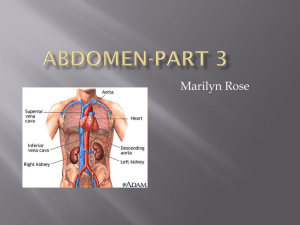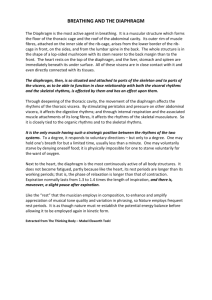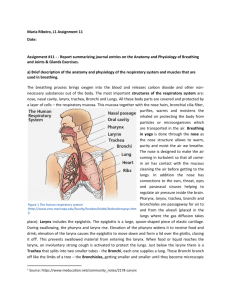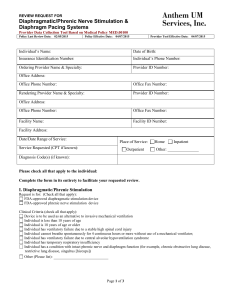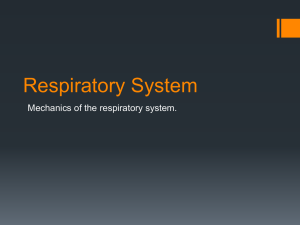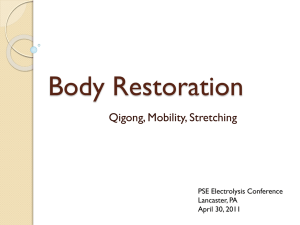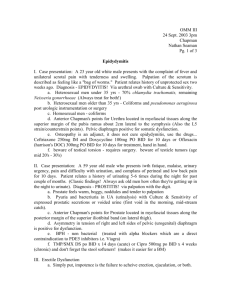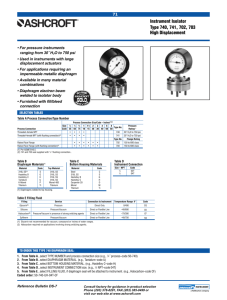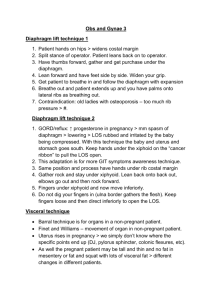Diaphragm
advertisement
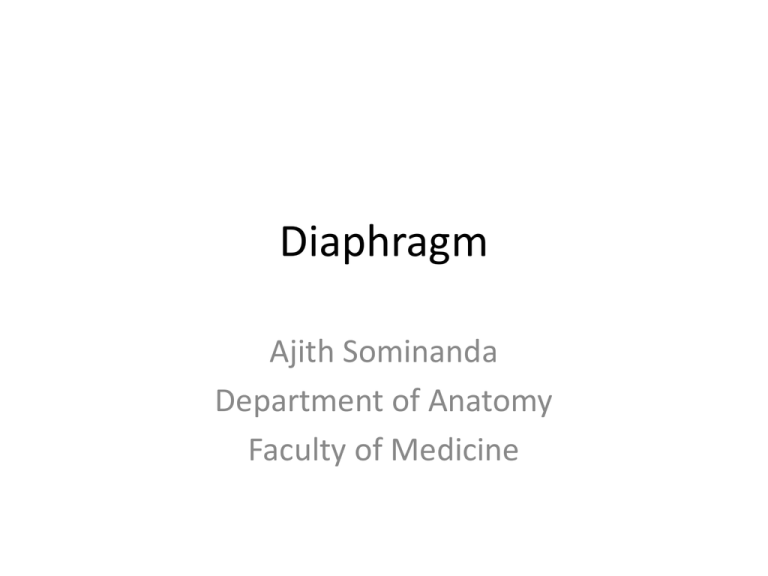
Diaphragm Ajith Sominanda Department of Anatomy Faculty of Medicine Objectives Gross structure, function & dysfunction 1. Describe the component parts of the diaphragm and state its functions 2. Describe the nerve supply and blood supply of the diaphragm 3. State and identify structures passing through the diaphragm including the vertebral levels 4. Use the knowledge of Anatomy in examining the respiratory system 5. State and describe the common clinical problems of the thoracic cavity 6. Clinical correlations of diaphragm related to respiration Development 1. Development of the respiratory system and associated developmental abnormalities 2. Describe the development of the diaphragm including its congenital abnormalities What is the Diaphragm • Fibromuscular / musculo-tendinous structure that separates the thoracic cavity from the abdominal cavity. • Main function is inspiration • Developed from inner (transversus) layer of body wall muscles Other diaphragms in human body • Floor of the mouth – Oral diaphragm • Thoracic diaphragm- The diaphragm • Floor of the pelvis – Pelvic diaphragm Components Domes or Cupola of diaphragm Muscular part Base of the diaphragm Tendinous part (central tendon)x Components Attachments • Xiphoid process anteriorly (T8T9) • Costal margin of the thoracic wall • Ends of ribs XI and XII; • Ligaments & crura that span across structures of the posterior abdominal wall • Vertebrae of the lumbar region. Median arcuate ligament Medial arcuate ligaments Lateral arcuate ligaments Structures pass through T8 T10 T12 Blood supply • Costal margin: lower five intercostal and subcostal arteries • Muscle fibers arising from crura: Left & right inferior phrenic arteries from abdominal aorta • Other contributions: pericardiacophrenic & musculophrenic from internal thoracic artery superior phrenic from thoracic aorta Nerve supply • Motor: – Phrenic nerve (C3,4,5) • Sensory (proprioceptive) – Costal margin by intercostal nerves – Central area by phrenic nerves Actions • Inspiration / Breath in • Abdominal straining Watch the video Accessory muscles of respiration Clinical correlation: Level and the area around of the diaphragm Clinical correlation: Examination of level of diaphragm Diaphragmatic hernia • Abnormal opening in the diaphragm specially during birth i.e. congenital • Abdominal contents herniate into thorax causing respiratory problems

